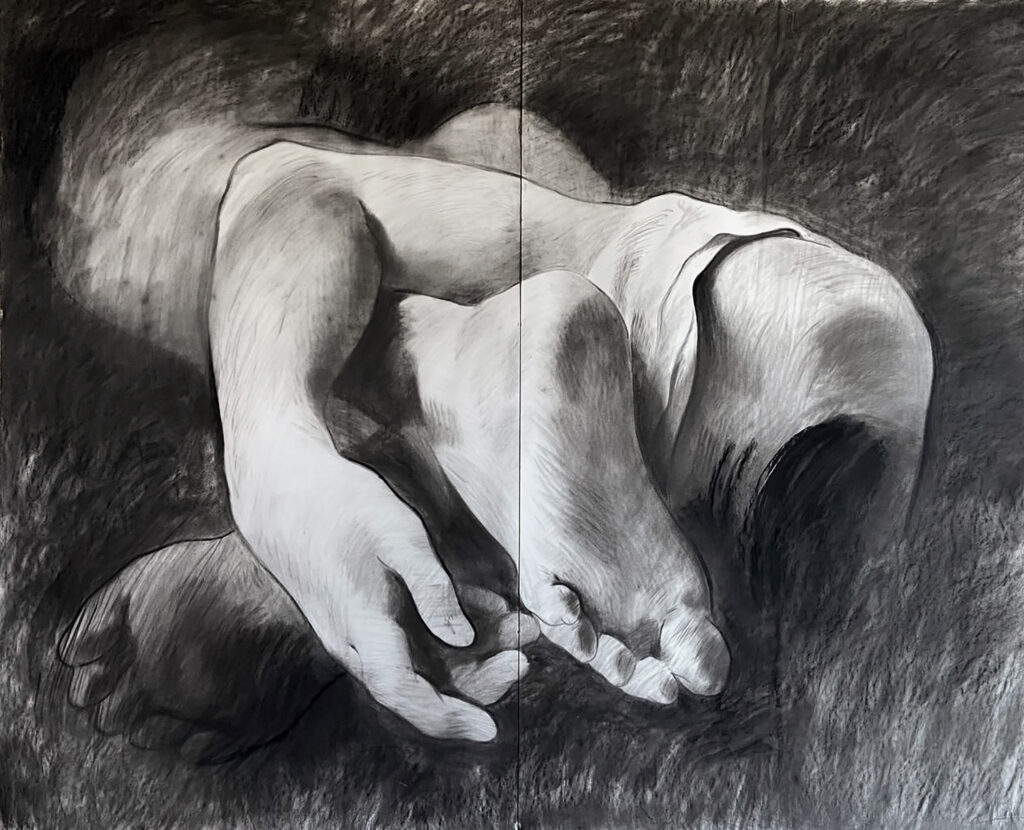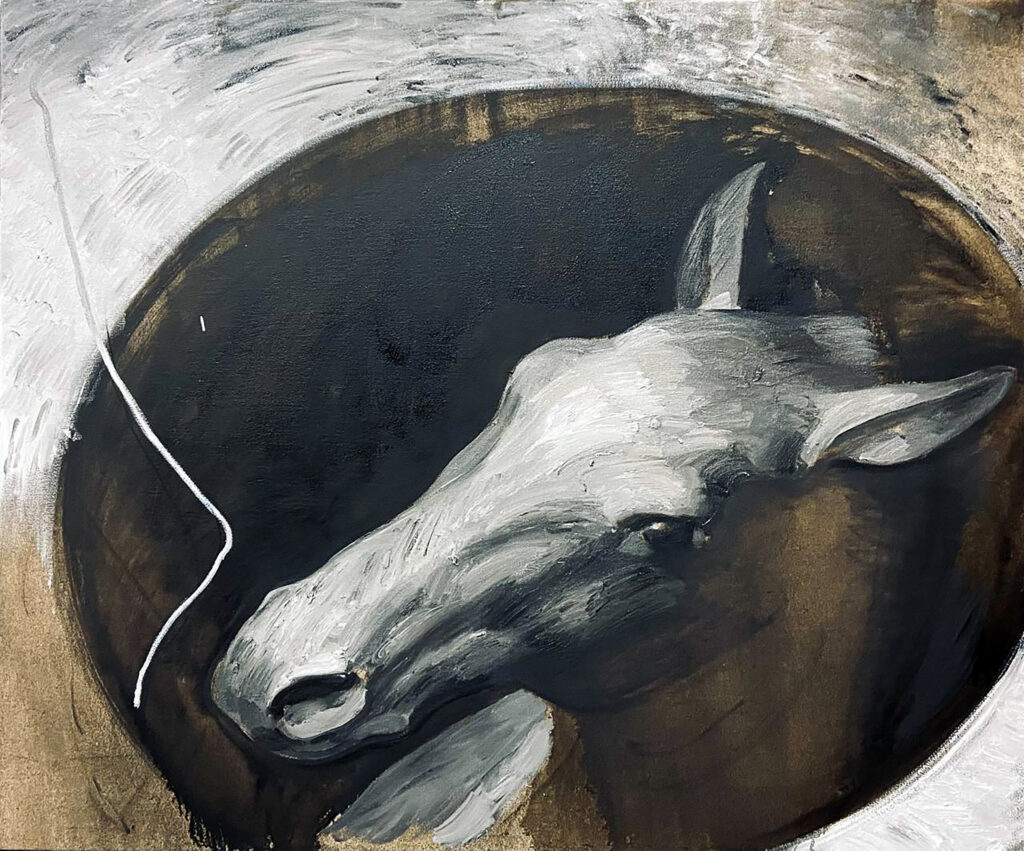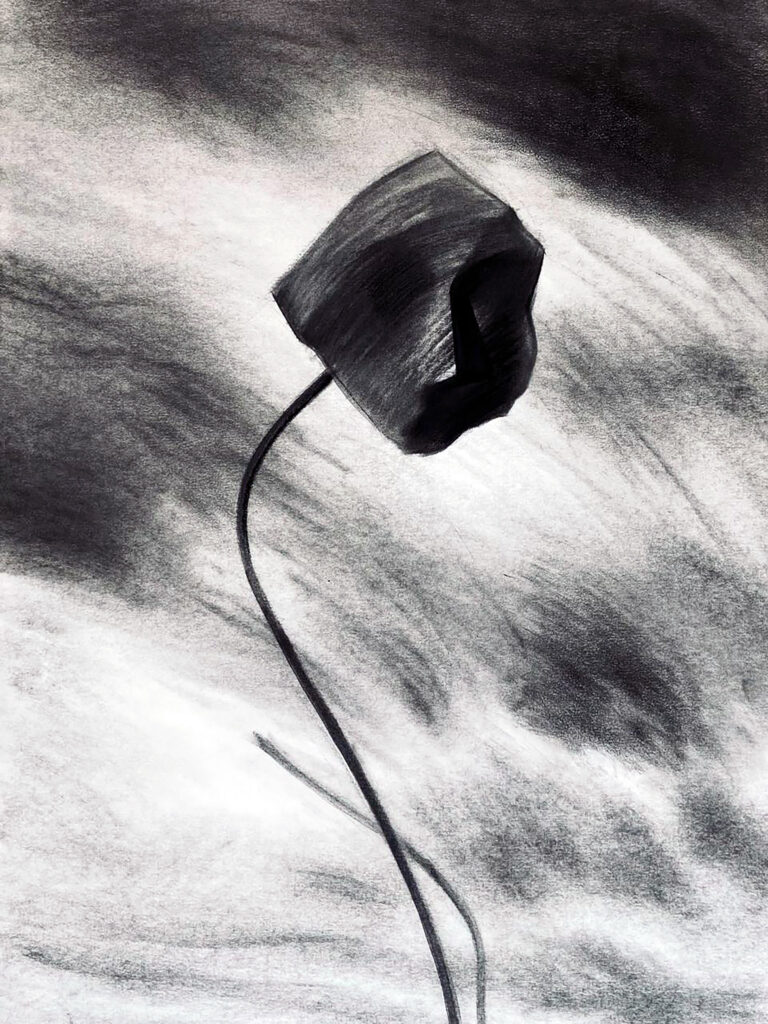The War Within: Nikita Kadan @ galerie Poggi Paris
Nikita Kadan, Rubble Flower
Between stone, dust, and ruin, seeds still tremble. Life insists ? Can even the wound bloom ? Is this what it means, Rubble Flower ? It stems of romanticism and romanticizing – a fragile child, a body between the rubble.

And then – the siren. A sound both sacred and fatal, a call that is both culture and catastrophe. An air alert, an aria. Its voices coil through the exhibition space like breath and threat, melody and mourning at once. The siren is eros and thanatos entangled: the sērein of Greek myth calling sailors to the rocks, and the modern voice of the state, the machine, the algorithm of survival. Each tone carries its archive of death. Each tone seduces.

There is always that edge : Eros and Thanatos, words unspoken. The bodies sensual under rubble, becoming rubble. Paintings and drawings occupy an impossible space between a war crime and temptation. Their colors are dark, earthen, and raw, our desires in plain sight. But more than that, the human body following Linda Nochlin “is not just the object of desire, but the site of suffering, pain and death (…) they serve to remind us that bodies quite literally ‘in pieces’, – broken, amputated- exist for the viewer not just as a metaphor but as a historical reality (…)”.

Kadans lines and strokes scratch between record and dream, between the forensic and the phantasm. It remembers the feet and hands of Géricault— Severed limbs (1818). Like Walter Benjamin’s Angel of History, Kadans figures are blown backward into the future. He draws and paints as a witness tracing the tension between historical image and today’s evidence. Depicting life as it is while transcending that same depiction remembering the horrors from the past as those of today’s future.

Drawing as ritual. Drawing as mania. Drawing as evidence. This is what “Rubble Flower” means. A flower without color, born from ash, painted not by color but by the memory of fire. Its seduction is not innocent – it is survival itself. It speaks of Ukraine, but beyond that of us all – of humanity’s entangled eros of creation and destruction. Kadan’s work strips away the mask of civilization, mobilizing its own cultural codes and iconographical system to expose the violence and desire that underpin them. It’s testimony, it’s a self portrait, it’s a hard place with soft bodies that will never keep us warm.
Björn Geldhof, curator
